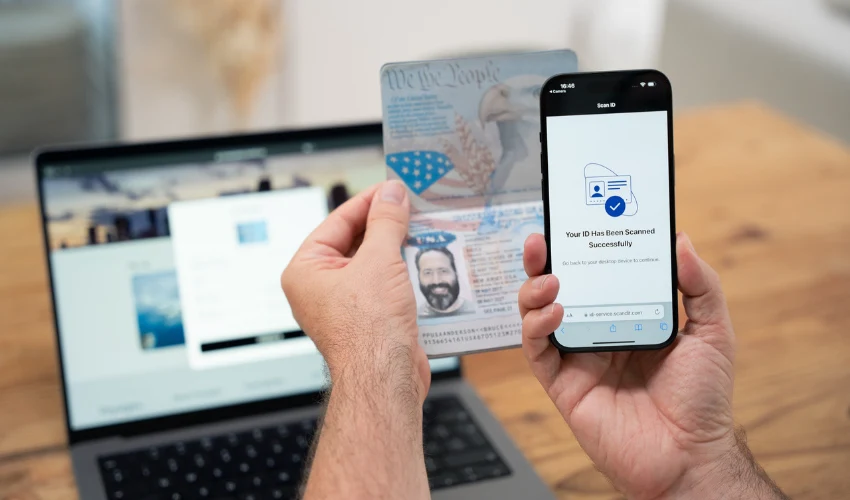In today’s digital age, identification plays a crucial role in various aspects of life, from accessing age-restricted venues to verifying one’s identity for financial transactions. However, with increasing security measures, the demand for fake identification has also risen, leading to the development of scannable fake IDs. These counterfeit IDs are designed to mimic the appearance and functionality of legitimate identification documents, allowing them to pass visual inspections and barcode scans. But what exactly is a scannable fake ID, and how does it work? Let’s dive into the details.
Understanding a Scannable Fake ID
A scannable fake ID is a counterfeit identification card that is engineered to replicate a genuine government-issued ID or driver’s license. Unlike traditional fake IDs, which might only look similar to real ones, scannable fake IDs contain encoded data within barcodes or magnetic strips, making them appear more authentic when scanned. These IDs are commonly used to bypass security checks, gain access to age-restricted areas, or even commit fraudulent activities.
Components of a Scannable Fake ID
To understand how a Scannable ID works, it’s essential to break down its components:
- Physical Appearance – A high-quality fake ID closely resembles a real one in terms of design, material, and printing. This includes features such as holograms, UV elements, microprinting, and raised text.
- Barcode or Magnetic Strip – Most modern identification cards have a barcode (PDF417) or a magnetic strip that stores encoded data. A scannable fake ID replicates this feature by embedding data that matches the information printed on the front of the card.
- Holograms and Watermarks – Many fake ID manufacturers incorporate holograms and watermarks similar to those found on real IDs to make them look more convincing under scrutiny.
- Tactile Elements – Some scannable fake IDs also include features like signature panels, embossed letters, or perforations to further enhance their authenticity.
How Does a Scannable Fake ID Work?
A scannable fake ID is effective because it mimics real identification both visually and digitally. Here’s how it works:
- Visual Inspection – The first level of security check involves a bouncer, cashier, or authority visually examining the ID to ensure it appears authentic. This includes checking the photograph, holograms, font, and overall layout.
- Barcode Scanning – Many establishments use ID scanners to verify the legitimacy of an ID. These scanners read the information encoded in the barcode or magnetic strip and compare it with the printed details.
- Data Verification – If the scanner detects mismatched or incomplete data, the ID may be flagged as fake. However, a well-crafted scannable fake idzone will have encoded information that aligns with the visible details, making it more difficult to detect.
- UV and Hologram Checks – Under UV light, genuine IDs exhibit specific security features. Advanced counterfeiters attempt to replicate these features, but imperfections can sometimes reveal the fake nature of the ID.
- Advanced Database Cross-Checking – Some high-end scanners connect to government databases to verify if an ID number corresponds to a real record. If the ID is fake, it won’t have a valid entry, exposing its inauthenticity.
The Technology Behind Scannable Fake IDs
Creating a scannable fake ID requires sophisticated technology and expertise. The main technological aspects involved include:
- High-Quality Printing – Professional-grade printers, such as those used for official documents, are necessary to produce realistic-looking fake IDs.
- Barcode Encoding Software – Software programs can generate barcode data that matches the printed details on the ID, allowing it to pass basic scanner tests.
- Hologram Replication – Some counterfeiters use specialized techniques to mimic holograms and UV elements found on real IDs.
- Magnetic Strip Encoding – Some fake IDs include magnetic strips that store encoded information, making them function like real ones when swiped through a reader.
Risks and Consequences of Using a Scannable Fake ID
While some individuals use scannable fake IDs to bypass age restrictions or gain entry into restricted places, the consequences of getting caught can be severe. Legal ramifications vary by jurisdiction but may include:
- Criminal Charges – Possessing, manufacturing, or using a fake ID can lead to misdemeanor or felony charges, depending on local laws.
- Fines and Penalties – Many states impose hefty fines for using fake IDs, sometimes reaching thousands of dollars.
- Legal Record – Being caught with a fake ID can result in a permanent criminal record, affecting future employment opportunities and background checks.
- License Suspension – If a minor is caught using a fake ID to purchase alcohol, their real driver’s license could be suspended.
- Fraud Charges – If a fake ID is used for financial transactions, it could lead to additional fraud charges.
How Authorities Detect Scannable Fake IDs
With advancements in security technology, authorities have become more adept at identifying scannable fake IDs. Some common detection methods include:
- Advanced ID Scanners – High-tech scanners cross-check the barcode data with official databases.
- Database Verification – Some establishments use systems that instantly verify IDs against government records.
- Hologram and UV Checks – Under specialized lighting, inconsistencies in holograms and UV features can reveal a fake ID.
- Behavioral Analysis – Trained staff can identify nervous or inconsistent behavior that often accompanies fake ID usage.
Conclusion
A scannable fake ID is a counterfeit identification card designed to pass visual inspections and digital scans by embedding encoded data within barcodes or magnetic strips. While they may work in some cases, technological advancements are making it increasingly difficult for these fake IDs to go undetected. The legal risks and consequences associated with using a fake ID far outweigh any perceived benefits. As security measures continue to improve, the chances of getting caught with a scannable fake ID become even higher, making it a risky and often unwise decision.
